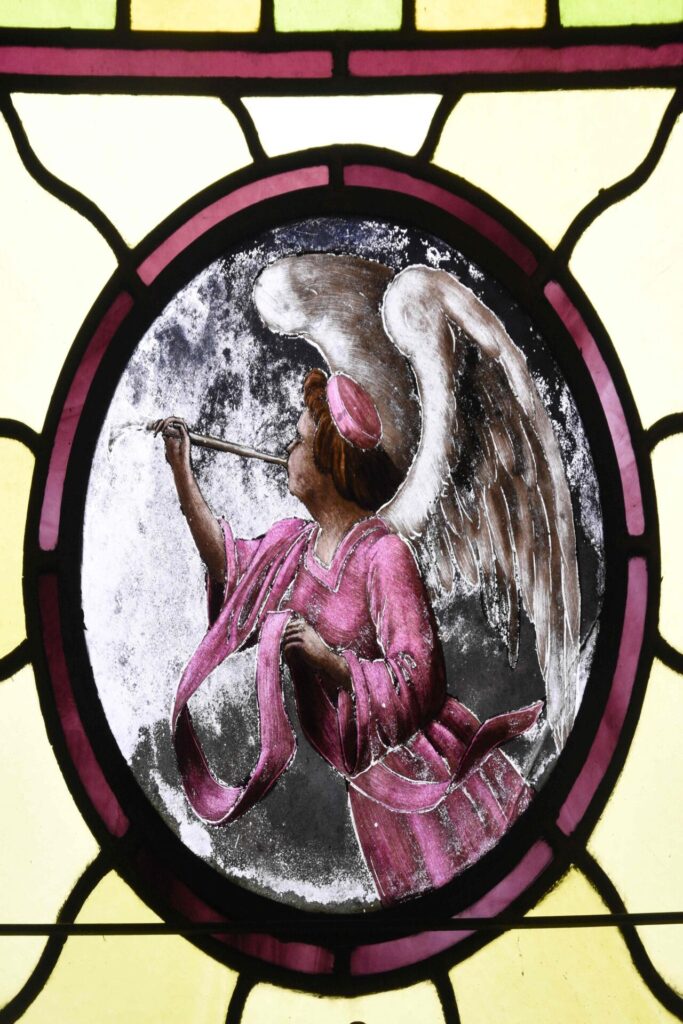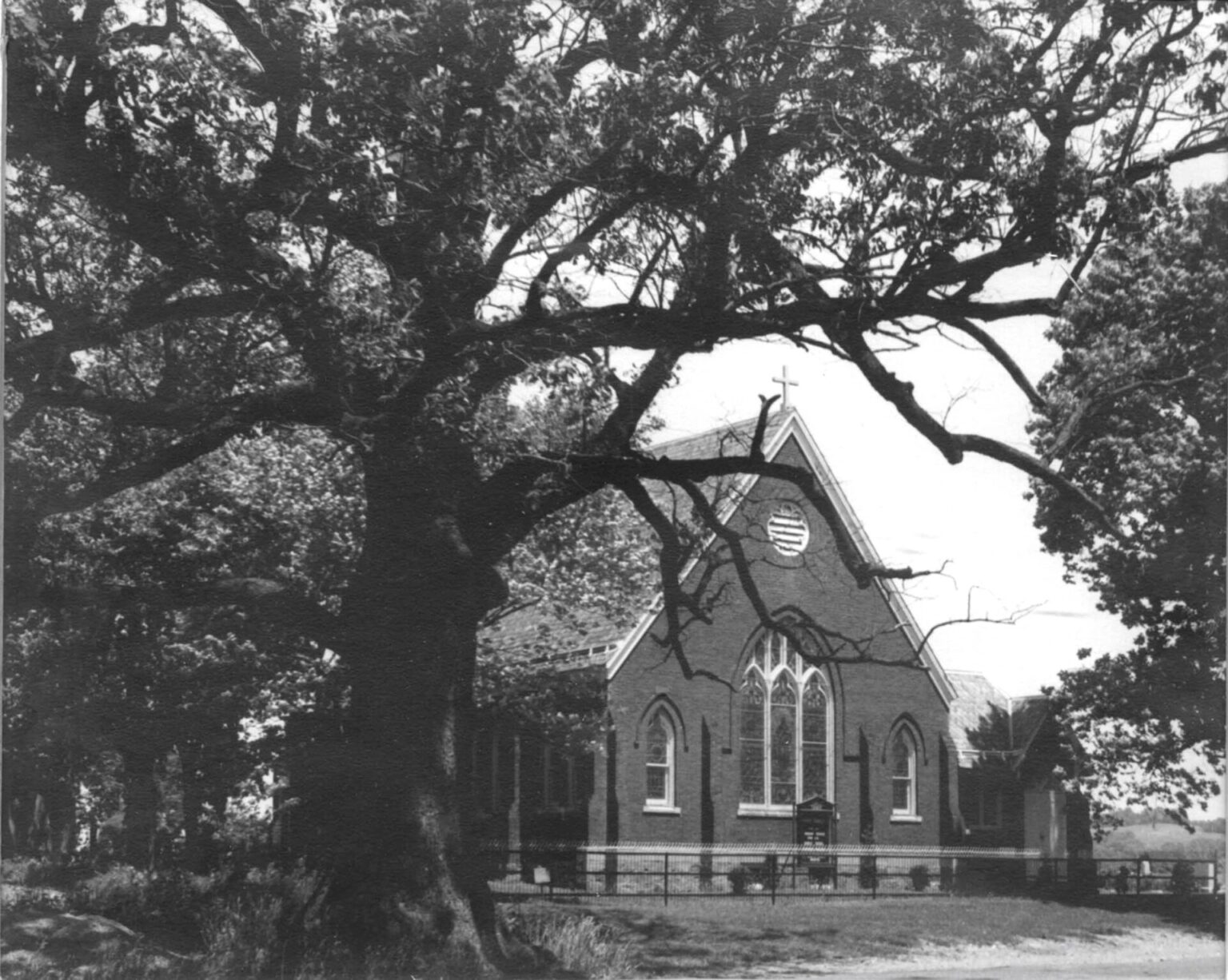Devout Christians built Harbaugh Church amidst rolling fields of fertile farmland. Surrounded by orchards in a picturesque Appalachian valley, this Washington Township architectural landmark is still a striking structure, 132 years after it first welcomed the faithful.
The building’s enduring presence has been a blessing. However, preserving Harbaugh Church required more than divine intervention. This church survived because charitable individuals and a diligent organization deemed it too important to lose, and they acted.
On this Franklin County pastoral site, locals built a simpler first church in 1846. Farmer George Harbaugh donated the land. His two brothers, Jacob and Henry, were ministers, and the latter presided over services at this first Harbaugh Church. During that same era, a cemetery originated on the four-acre grounds. The congregation was affiliated with the Reformed Church.
Later, after pastor Henry Harbaugh’s death, the thriving congregation requested a larger and more ornate place to worship. The present late gothic revival-style structure was completed in 1892. The brick structure is one and a half stories tall and features a gabled roof, brick buttresses and lancet stained glass windows.
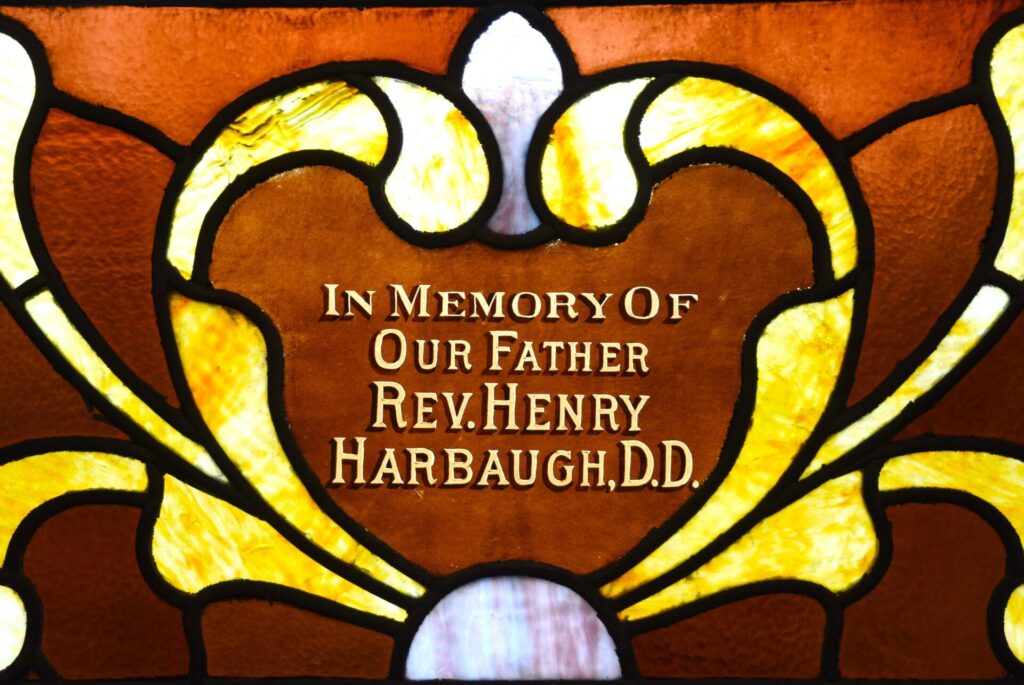
For the next 74 years, people gathered at Harbaugh Church for baptisms, weddings, funerals and weekly prayer. While services were constant, the religious denominations changed from time to time. But the memories created at the church lingered.
At a recent Harbaugh Church Saturday open house, former parishioner John E. N. Blair returned for a visit. A retired Army colonel, Blair shared stories about the church, a central focus of his family’s faith during childhood.
Blair recalled a particular church service at age 9 that elicited a smile. His mother, Margaret “Beckie” Blair, was the church’s assistant organist. During the 1957 Christmas season, son John and mother Beckie performed a piano duet of “Silent Night” for the congregation. That pleasant memory stayed with the Blairs and spurred them to future kindness on the church’s behalf.
By the 1960s, Harbaugh was one of two local churches serving the same denomination. In 1966, the parishioners voted to consolidate, and the other much larger building was narrowly chosen as the unified church site. Harbaugh Church was abandoned.
The deserted church sat empty for the next 17 years, braving the elements while ignored during its lonely exile. Rainwater invaded the interior and vandals attacked the structure’s exterior. The building, still surrounded by more fields than people, seemed forgotten and headed for eventual destruction. But in 1983, the church was sold for a single ceremonial dollar to the Waynesboro Historical Society.

That wise transaction started a two-decade process to rescue and restore Harbaugh Church. The first step: replacing the steep-pitched slate roof to keep intrusive rainwater outside. After protecting the interior, extensive work brought the church’s interior sanctuary back to its former luster. The original pews were still on site and refinished. Some of the light fixtures were gone, but others remained. Removal of dirt and grime caused by years of neglect revealed beautiful wood finishings. The altar was restored, and stained glass windows were repaired and cleaned.
This work took years, instead of months, since fundraising was a constant process, as multiple projects required more than $125,000. John Blair credits his mother, Beckie, as a major force in raising that money, and donations came from individuals and businesses inspired by the Historic Society’s preservation project.
With the collective effort of the Society’s members and community patrons, the church’s restoration was completed by 2002. The building was honored that same year with a National Register of Historic Places designation, one of only three churches in Franklin County to date to achieve that distinction.
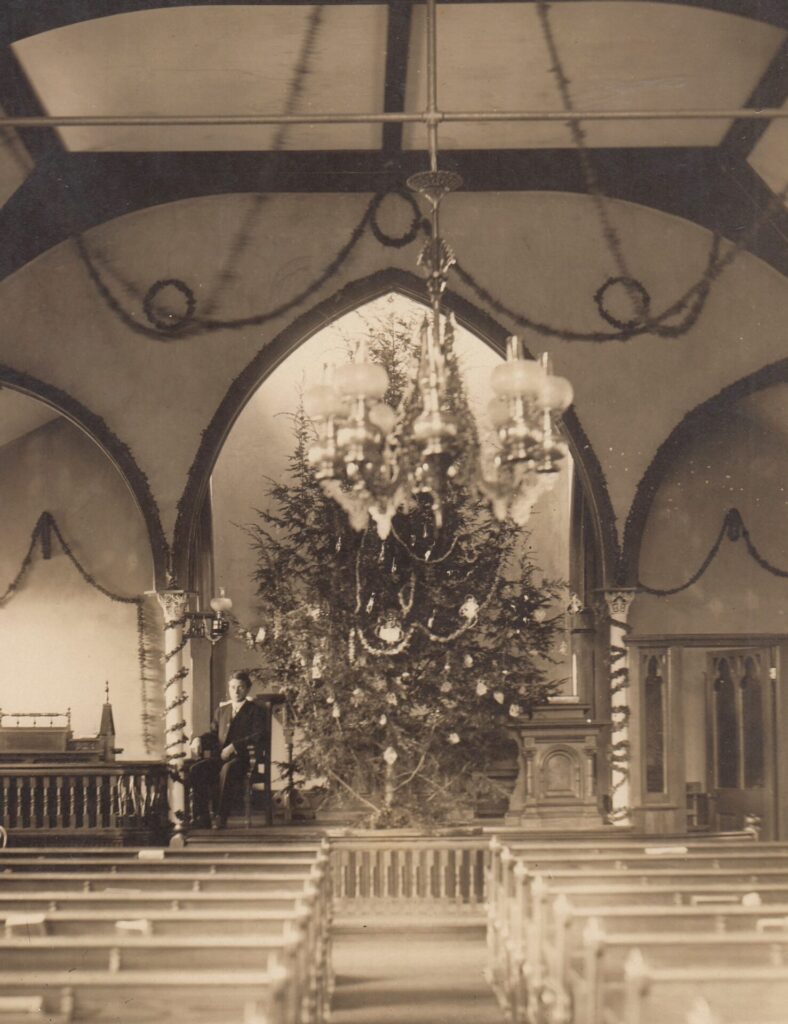
Today, inside Harbaugh Church, the result of that diligent preservation effort is easily appreciated. Visiting the sanctuary is a journey back to a simpler yet rich era. Quiet reverence infuses the small church. Eyes focus on ancient religious symbols situated among architectural details. This combination enhances the tranquil harmony, serving as an open-arms invitation to a unique spiritual experience.
Like many churches from this timeframe, the stained glass windows are a treasure. With vivid color and artistic design, these portals illustrate symbols of Christian faith and also recognize the church’s founding pastor. Unique items pictured include fashionably dressed angels and golden harvested wheat. Light passes through these glass artworks, imbuing them with a heavenly glow.
After exploring the church’s interior, the restoration work at Harbaugh Church appears finished, a job well done. However, after the bulk of any restoration work completes, preservation organizations remember one daunting fact: their project is never fully finished. Older buildings require constant care, and these fixes include complicating factors such as highly specialized repairs and protecting structural integrity while retaining the building’s original architectural character.
Harbaugh Church’s slate roof recently needed additional repairs, and in 2017 a charitable donor contributed $30,000 to help protect and stabilize the church’s vulnerable exterior windows.
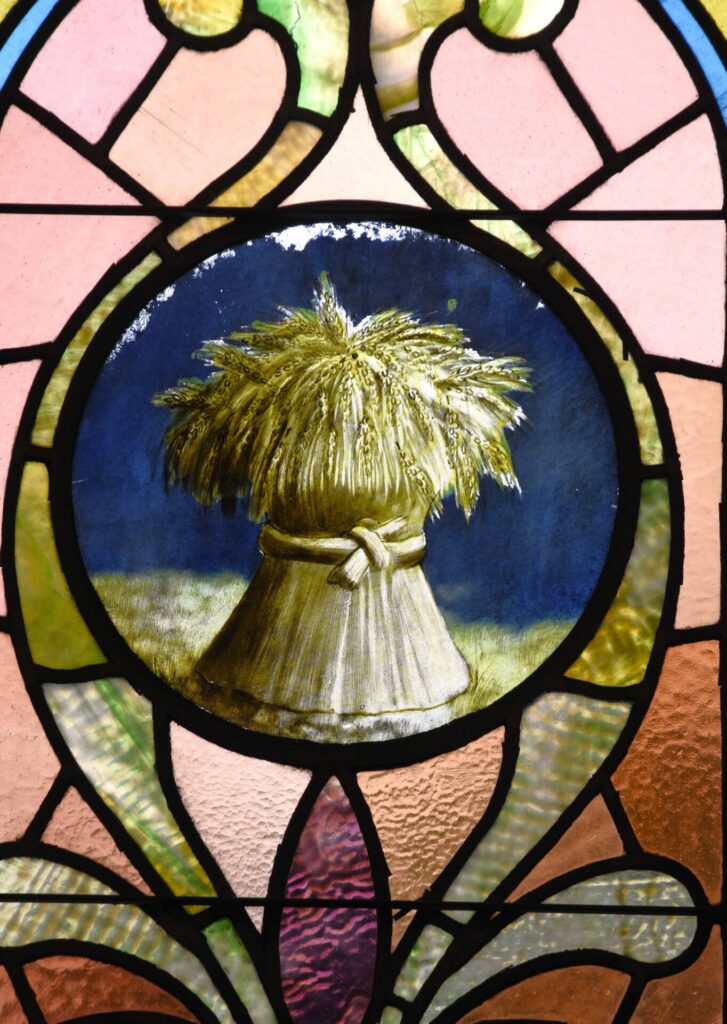
The Waynesboro Historical Society’s mission is especially difficult since it fights this ongoing battle while preserving two other NHRP sites, in addition to Harbaugh Church. Their headquarters are housed at Oller House, a grand Victorian home on Main Street, open for weekend tours and historic research. WHS also owns Welty’s Bridge, a handsome stone-arched bridge (now closed to vehicle traffic) that spans historic Antietam Creek.
Current WHS board member Lesley Quesada took a special interest in Harbaugh Church and has fortified the organization’s mission by helping share this architectural gem with the public. The church is typically open the first Saturday of each month from 10-12 am. WHS has also opened the property for special events. People or organizations may rent Harbaugh Church for weddings, baptisms and funerals (the latter two are free), and also for potential lectures, group/family meetings or small concerts. The church can comfortably accommodate up to 100 people.
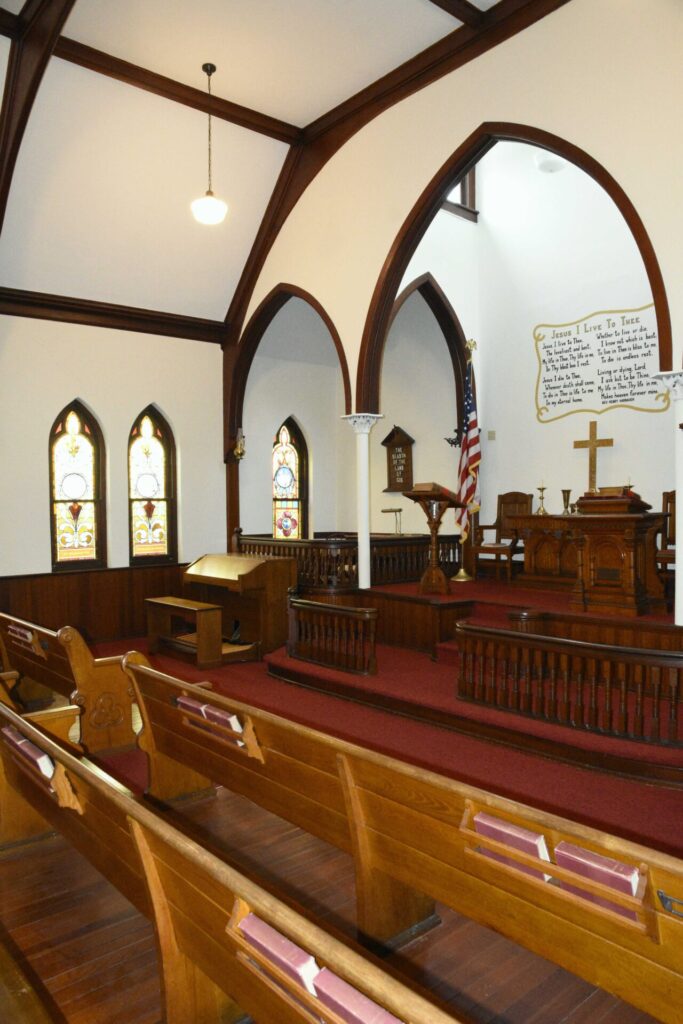
After a recent Harbaugh Church wedding, Quesada remarked how wonderful it was to hear music in the old church once again. “This is how this building is supposed to be used, so we take great pleasure sharing it with the community.” She also mentioned WHS always appreciates new members who volunteer their time for important preservation efforts.
The church will host another wedding soon. Although Harbaugh Church lacks running water or air conditioning (it has heat), the space is still a charming location for a memorable event. “This is a wonderful building,” Quesada said.
The cemetery remains an important part of the church’s legacy, and family members still visit departed loved ones and tend to their plots. Peter Rouzer, namesake of nearby Rouzerville, is buried here. The Harbaugh Cemetery Association, a non-profit, owns this resting place and maintains that part of the property. This separation allows WHS to concentrate on maintaining the church building — except for one notable gravesite — reserved for prominent former pastor Paul Nagy who died in 1958 and rests near the front entrance.
For three-quarters of a century, Harbaugh Church enjoyed its heyday. No matter the denomination, people worshipped under its protective roof. Then, the church was given a second lease on life. Initiated in 1983, the restorative success at Harbaugh Church teaches an important civic lesson. These brick-and-mortar structures should be saved not only for unique architectural features but also for the intangible emotions created inside.
At Harbaugh Church, faith and spirituality from bygone eras still evoke memories. Now, this elegant structure offers opportunities for crafting new emotional experiences, ones that form a lasting spiritual foundation for a pleasurable life.
